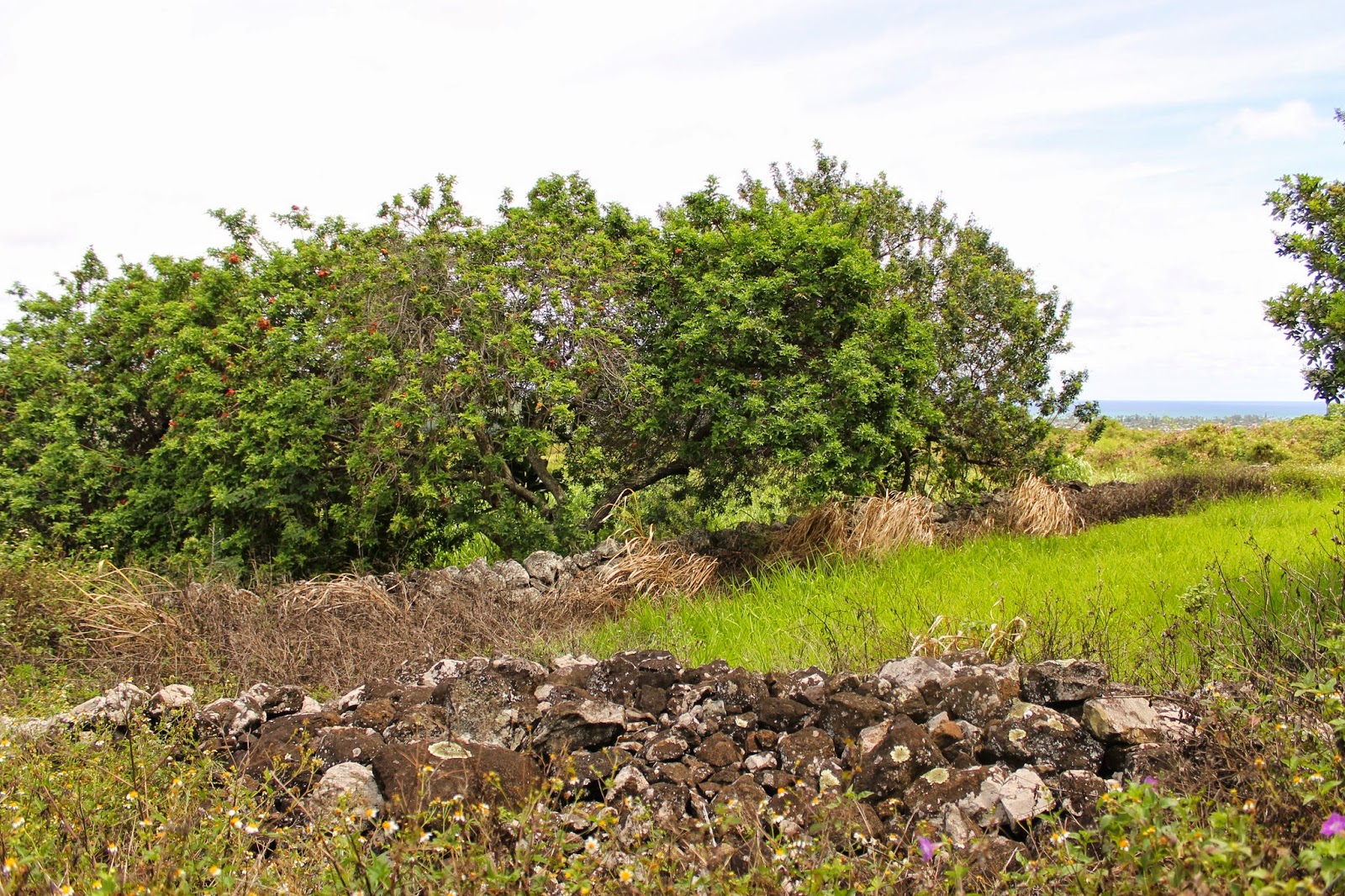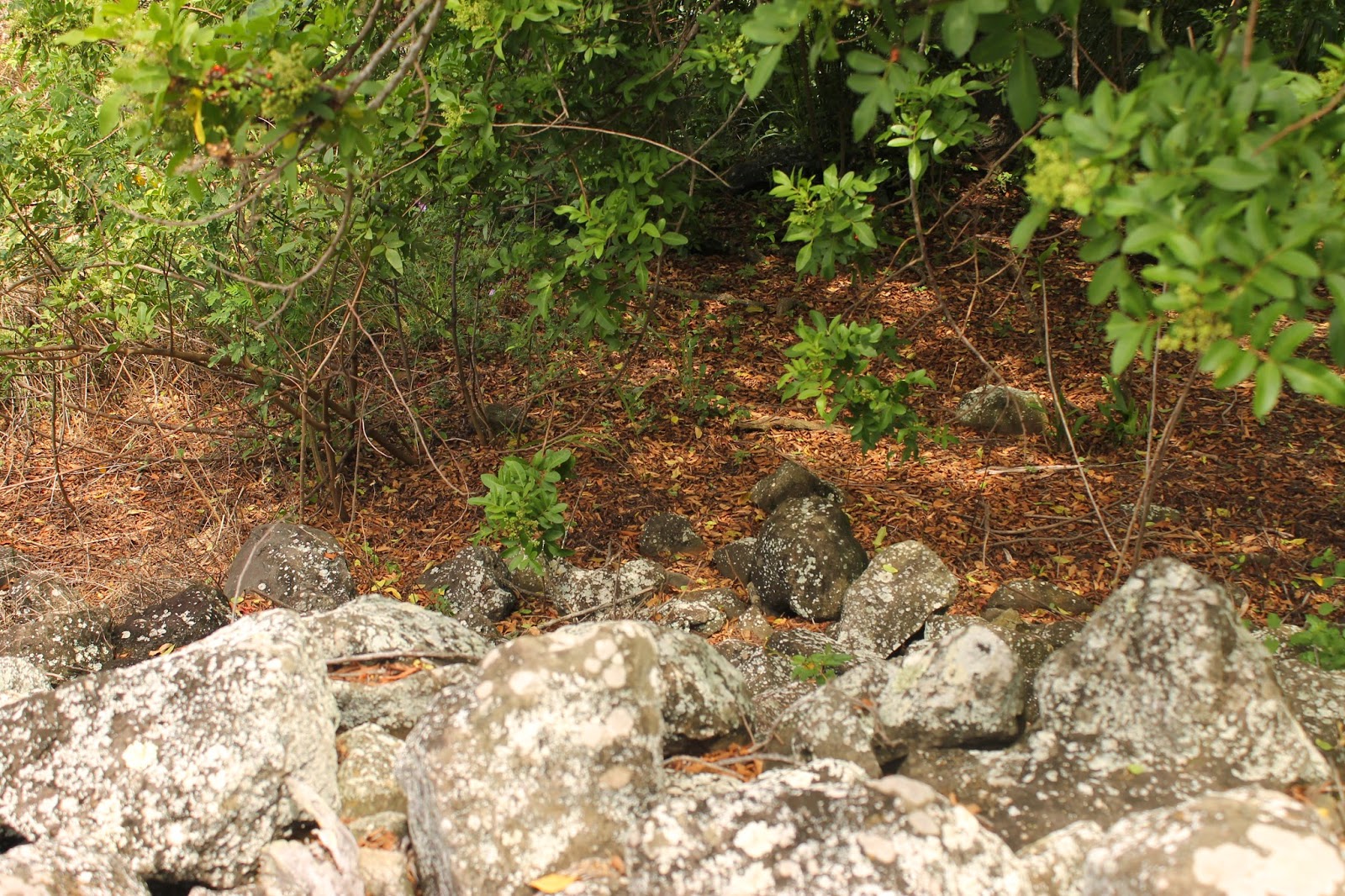Last, last Saturday I decided to take a ride out to a place in Waiawa I've been reading about for the last three weeks. I studied maps easily found online and plotted my course on Google maps. Using the Terrain option to figure out exactly what approach to take.
Aside from the large military presence in the mauka and makai areas. To the regular passersby Waiawa pretty much seems untouched by modern development. Although, sugar plantations were the first to totally envelop this district. Now it seems like a solar farm will be the next occupier of this ahupuaa for this generation of Oahu.
Waiawa is named after the bitter drink of Awa that was used by the higher ranked in the old times and later commoners drank it as well. It was said the water ways themselves are similar to that of an awa root the way they twist and turn through the lowland areas before finally reaching Pearl Harbor. Now those waterways are restricted and channel into one stream instead of a wide delta at the mouth of it. It is choked and narrow for the most part. Awa has other meanings like that of the milkfish, and awa can also mean a harbor cove or passage...
The freeway intersects a couple of the gulches of Waiawa and border Waipio. I had to figure out a way to get where with the least amount of trail searching and I couldn't just park a car where I wanted to enter the overgrowth.
I took a pretty dangerous bike route that I wouldn't like to have anyone else attempt on my account...
I found a ditch that led water from the freeway into the gulch below. So I stepped lightly through the California grass and expected it to suddenly drop off at some point like most do.
Finally I got into Panakauahi Gulch. I was both relieved and saddened to find fresh tracks from dirt bikes down there. Relieved because I wasn't the last person here in awhile because that's just creepy. Saddened because the motorbikes are doing damage to the ancient trail.
This path along the ridge of Waiawa was used for unnumbered generations through precontact and up until modern times. People travelling from the Kona to Ewa district up to the Lihue area and even further toward Waialua took this route. Trails pointed out by John Papa I'i shows this route leading to Oahunui via multiple Waiawa gulches and finally to the Kipapa and Waikakalaua gluches. The H2 freeway was built to follow this route. Although an older route about a mile eastward would have also been traveled as well...
Imagine yourself taking this trail long ago. You've had something to do with the water of Puuloa and now you are heading inland along this well beaten path. The trek takes a lot of effort and you need to rest, maybe for the night. Rain brings a flash flood down the normally placid stream. Where do you go for a break?
This outcropping is one of the only spots in the gulch that has a sheer cliff. The rest of the gulch has a gradual slope. It's not hard to picture it being a nice rest spot that is protected from above and just high enough to avoid any rise of water and debris.
If you have the time to hang out for a bit. Why not get down on some ancient graffiti? The Waiawa petroglyphs are said to have had about 75 images carved into the rock face.
At the time I didn't even notice any but after walking up and down the possible locations for it I was convinced they were in the surface. Finally the legs and body of a figure stood out. Honestly, this was the only image I was convinced I saw. Up until I looked at the images here now that you see for yourself.
There are legends and song of this district.
One legend is of a chiefess from Hawaii island taking this path. She stopped to hide her Nihi Palaoa, whale tooth pendant in order to keep her status secret. A stone akua of this valley named Ke'kua Olelo, talking god witnessed where she hid it. In a rock at a heiau across the gulch, later to be named after the talking god. He promised her that he would show her descendants where it was hidden.
Another legend involing the same Ke'akua Olelo is when it witnesses two starving children. A brother and sister coming from the ocean decide to eat a fish together instead of taking it back home. This was during the kapu system that did not allow male and female to eat together. Possibly the only time the kapu ai was broken up until Liholiho ate with his mother Kaahumanu after the death of Kamehameha...
Pa'ahana is a song written about a woman that runs away from home and lives in the mauka regions of Waiawa feeding on opae, shrimp and guava.















































































